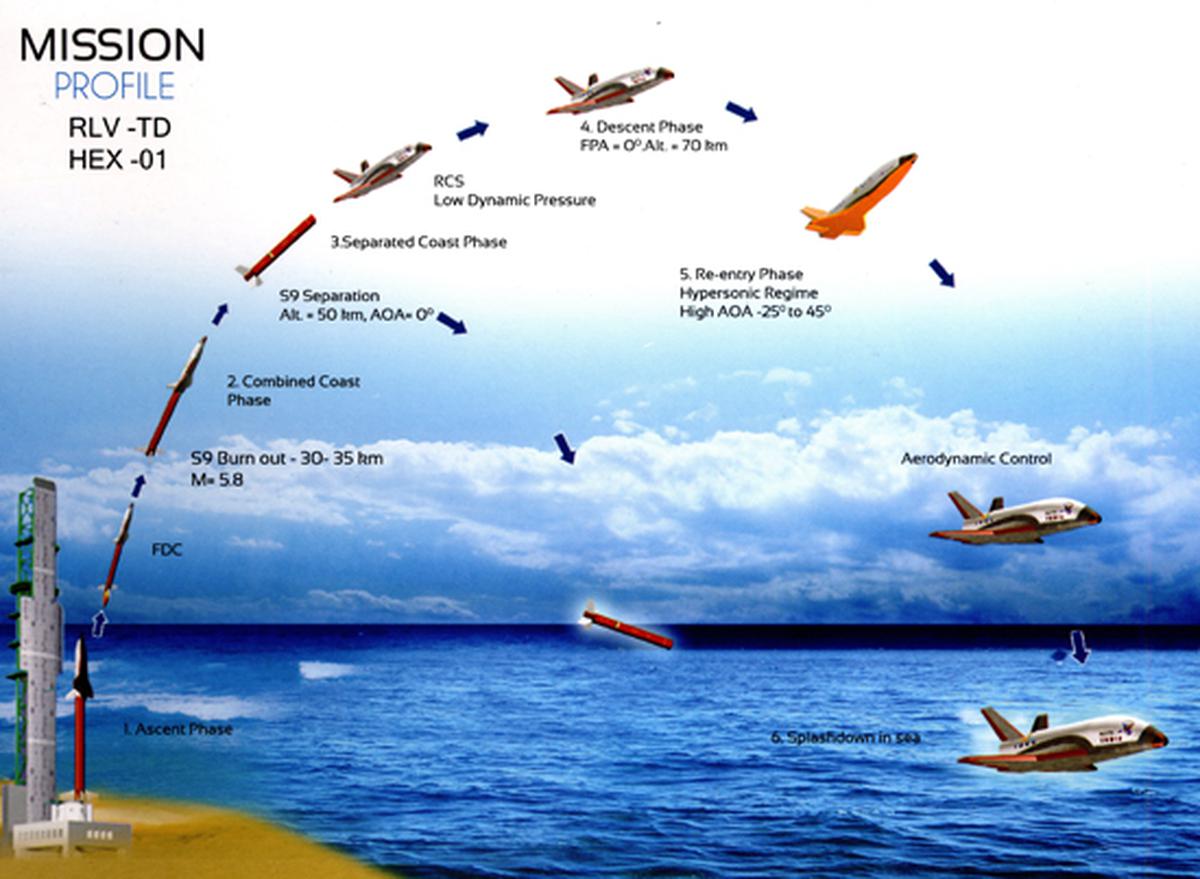Context
-
Inching closer to a fully reusable launch vehicle, the Indian Space Research Organisation (ISRO) successfully carried out the landing experiment of the Reusable Launch Vehicle-Technology Demonstration (RLV-TD) programme.
Background
- The RLV was dropped by an Indian Air Force (IAF) Chinook helicopter from an altitude of 4.5 km.
- The vehicle performed approach and landing manoeuvres on the runway autonomously, under the conditions in which a re-entry vehicle from space might return — at high speed and without human inputs, to achieve a stable landing.
- Currently, ISRO has three active launch vehicles:
- the Polar Satellite Launch Vehicle (PSLV),
- the Geosynchronous Satellite Launch Vehicle (GSLV), and
- the Launch Vehicle Mark-III (LVM3).
- The PSLV has four stages while the GSLVs have three stages each.
- Each stage has a different fuel, and is jettisoned when the fuel is expended as the rocket ascends.
What is a reusable launch vehicle?
- Primarily, launch vehicles comprise three or four stages apart from the payload, which needs to be launched into a polar or a geosynchronous orbit, depending on a mission’s requirements.
- In ISRO’s three-stage rockets,
- the first — or lowermost— stage has a motor fuelled by solid fuel (in the GSLV, this can also be augmented by up to four liquid strap-on boosters);
- the second stage has the Vikas engine powered by liquid fuel; and
- the third and uppermost stage has a cryogenic engine, which uses liquid oxygen and liquid hydrogen.
- In the four-stage PSLV,
- the first stage has a motor using solid fuel (augmentable with up to six solid-fuel strap-on boosters),
- the second stage has a Vikas engine,
- the third stage again has a solid-fuel motor, and
- the fourth stage has two liquid engines.
- The RLV that ISRO is building has only two stages to propel the vehicle into orbit.
- Once the fuel in the first stage has been expended, the vehicle will shed it, and carry on with the second stage.
- Once it has been shed, the first stage will re-enter the atmosphere and land in an autonomous fashion at a pre-determined location. After some maintenance, it will be available for reuse.
What reusable technologies are currently in play in spaceflight?
- Several DC-X engineers subsequently moved to Amazon founder Jeff Bezos’s space company Blue Origin.
- On November 23, 2015, Blue Origin’s reusable space vehicle ‘New Shepherd’ successfully undertook a suborbital flight, reaching an altitude of 329,839 feet, and then performed a controlled landing back at its launch site in West Texas with the help of a parachute drop.
- Perhaps the most famous player in the reusable spaceflight sector is is Elon Musk’s SpaceX, founded in 2001. Both Blue Origin and SpaceX, among others, are developing rockets with reusable parts, especially the first stage, rather than the whole vehicle being reusable.
- Then came the Falcon 9 in 2010, a 54-metre-tall two-stage rocket with nine engines, capable of transporting cargo and crew to the International Space Station (ISS).
What is ISRO working on?
- In 2010, ISRO began developing a winged reusable rocket, taking the first step towards realising a two-stage-to-orbit (TSTO) launch vehicle that could be fully reusable.
- On May 23, 2016, the winged vehicle successfully flew at hypersonic speed.
- It also withstood fiery re-entry temperatures as it re-entered, qualifying its thermal protection systems, before it touched down at a pre-determined site 425 km east of Sriharikota, in the Bay of Bengal.

RLV HEX-01 mission
- While several other related technologies have been tested through the years, ISRO’s RLV’s autonomous landing was only tested successfullyon April 2, 2023.
- Currently, ISRO is working on the ‘Orbital Re-entry Experiment’ (ORE), which will be taken to orbit by a modified launch vehicle comprising existing GSLV and PSLV stages.
- The vehicle will stay in orbit for a stipulated period, re-enter, and finally land autonomously on a runway, with landing gear.
Source: TH
Visit Abhiyan PEDIA (One of the Most Followed / Recommended) for UPSC Revisions: Click Here
IAS Abhiyan is now on Telegram: Click on the Below link to Join our Channels to stay Updated
IAS Abhiyan Official: Click Here to Join
For UPSC Mains Value Edition (Facts, Quotes, Best Practices, Case Studies): Click Here to Join
